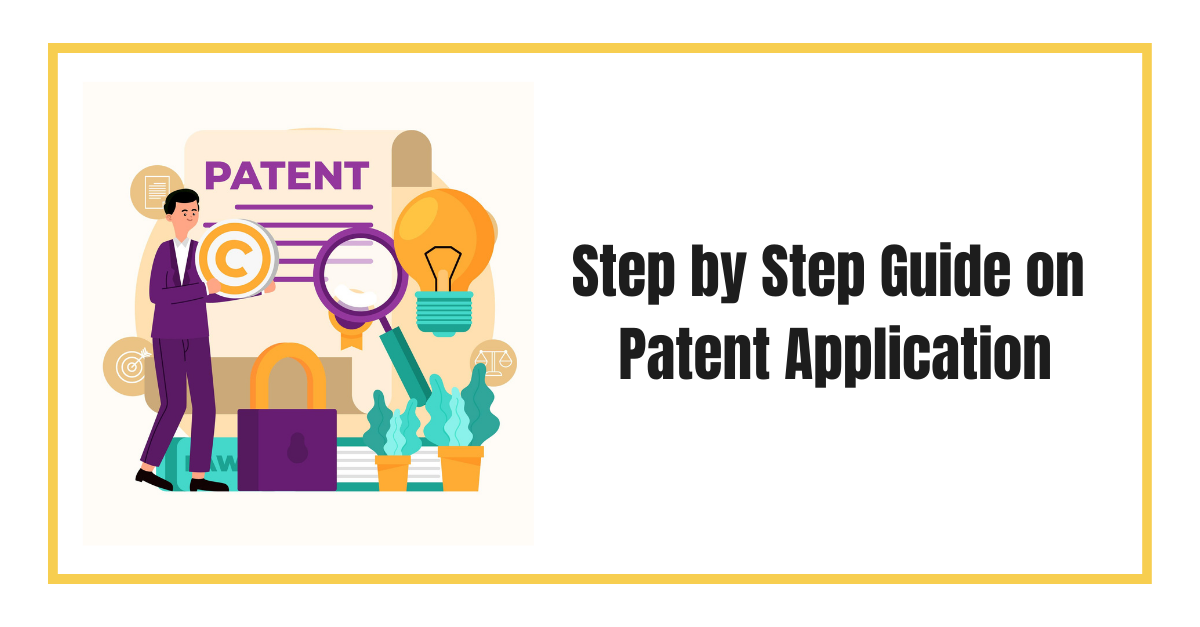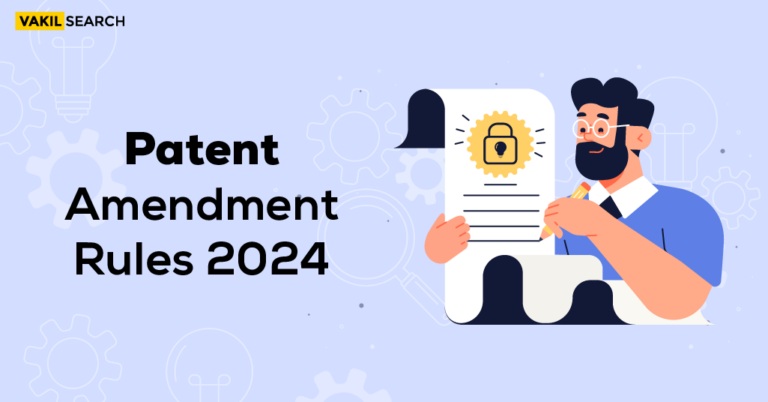Unlock the secrets to successful patenting with our Step-by-Step Guide on Patent Application. Navigate the intricate process effortlessly and gain valuable insights to protect your innovations effectively.
Overview
To get your invention patented, you must be familiarised with the legal procedures involved in the latest patent filing . There are recent updates in the patent regime as Patents (Amendment) Rules, 2021. Know more about Patent Application in this blog!
With these amendments coming into force, inventors and patentees have various advantages, making the filing more accessible, quick, and seamless.
Advantages like an 80% decrease in patent filing fees for educational establishments, an expedited route for grant of patents like 1-1.5 years which used to be 3-4 years, faster.
The expedited patent examination for specific categories like start-ups, women applicants, SMEs, central and government institutions, educational institutions, etc., are some of the benefits that make patent filing more economical and faster.
So, there are two ways in which an inventor can file a patent, such as an inventor can file a patent on their own or hire and take the guidance of a patent filing professional.
While the recent updates made the Indian patent filing relatively easier, taking the help of a patent filing specialist and having proper knowledge of the due of patent filing can help you a lot. Hiring a specialist can also help you meet the deadlines in patent filing. Now let’s look into the step-by-step guide for patent filing in India.
What is a Patent?
A patent is a legal document granted by the government that gives inventors exclusive rights to their inventions for a specified period. It provides an inventor with the authority to prevent others from making, using, selling or importing their invention without permission.
Key Aspects:
– Invention Protection: Patents protect various inventions, including processes, machines, compositions of matter, and improvements to existing inventions.
– Limited Duration: Patents have a finite duration, typically 20 years from the filing date, during which the inventor has exclusive rights to the invention.
Benefits of Filing a Patent
- Exclusive Rights:
– The patent holder gains exclusive rights to make, use, and sell the patented invention, preventing others from exploiting it without permission.
- Commercial Advantage:
– A patent provides a competitive edge in the market, allowing the inventor to capitalize on their innovation and potentially monopolize the industry.
- Revenue Generation:
– Patent holders can license or sell their patents, generating revenue through royalties or the outright sale of the intellectual property.
- Technological Advancement:
– Patents encourage innovation by rewarding inventors, leading to advancements in technology, science, and various industries.
- Legal Protection:
– Patents offer legal protection, enabling the inventor to take legal action against anyone infringing on their patented invention.
Steps Involved In the Patent Filing
Step 1 – Securing your Novel Idea and Invention (NDA)
One of the concrete reasons for getting the patent is your novel and unique idea. The patent regime is created to protect inventors’ rights and encourage them to pursue as many inventions as possible.
So, it can be understood that a single fresh ‘idea’ capable of getting your patent holds greater importance than anything.
So, your duty as an inventor is to protect your idea and invention at all costs. Secure your idea with as many details as possible by writing it down and saving it as a soft or hard copy.
Another significant step is to make sure you made them sign the Non-Disclosure Agreement (NDA) before disclosing your idea to any agency or patent filing professional.
Step 2 – Verify Whether Your Idea Satisfies the Patentability Criteria
Although this is an optional step, this is going to save your time, cost, and efforts by many folds.
After conducting the novelty and patentability search, you can get an idea about whether your invention is worth getting a patent or not. With this method, you can clearly understand whether you should file a patent in the first place.
Step 3 – Patent Draft
Drafting the patent requires knowledge of legal drafting techniques and technical details. You can pick between a provisional patent application and a complete patent application based on your invention stage.
If the invention is at the testing stage, opt for a provisional patent application which gets you 12 months to improve your invention to the final stage.
The patent draft must include all the important clauses, detailed descriptions, inventive steps, patent specifications, and more to survive till the end of patent registration and further commercialization.
The clauses should be drafted so that no competitor or person can misuse your invention for their benefit. Be meticulous and give special attention to the patent draft. Get your patent draft with Vakil Search now!
Step 4 – Filing the Patent
Following the patent draft, you can file your patent application at the government office, and they will provide you with the patent application number that comes with many benefits.
The main advantage of filing a patent application is that you can use words like patent-pending/patent applied for your invention, which prevents any other person from misusing your idea.
Application forms must be filed along with your patent application, such as Forms 1, 2, 3, 5, 26, 28, and other relevant applications.
Step 5 – Publication of the Patent Application
Once you file your patent application, the Indian Patent Office will safeguard it. Your patent will be published in the “official patent journal” after approximately 18 months. If you are an inventor who wishes to have your patent published before the 18-month timeframe, you can submit Form 9 with an early publication request. Your patent will be published within a month of the early request. However, it’s possible that your patent might not be published in some cases due to incomplete applications, withdrawal requests, and other reasons.
Step 6 – Examination Request by Inventor
Unlike the automatic 18-month period followed in the publication of a patent, the examination of the patent is not automatic and requires the applicant’s or inventor’s request for inspection.
The inventor shall file Form 18 (Form 18 (A) for expedited or faster review for certain applicants) and formally request the patent office to examine the patent.
Following the formal request, the patent officer examines your patent application in a prescribed way and verifies the following points during the examination:
- The patent application is reviewed according to the Patent Act and relevant provisions thereof
- The patentability criteria like novelty, non-obvious and inventive step, industrial application, patentable subject matter, etc., are searched and verified
- Following the patent scrutinization, the examiner releases the first examination report (FER) along with grounds for any objections
- The objections made by the examiner can further extend the application by 6-9 months
- The inventor can request the time extension by submitting Form 4.
Step 7 – Responding to Examiner’s Objections
After filing Form 4, the inventor and the patent attorney shall analyze and comprehend the examination report. The patent agent creates a written response to the objections raised, proving the invention is patentable and novel. The written response shall indicate that your design satisfies all the patentability criteria.
Step 8 – Patent Grant
Suppose the examiner is satisfied that your invention meets all the patentability criteria ad finds no objections. In that case, the patent is granted to you and then published in the ‘official patent gazette’.
Step 9 – Renewal of Patent
Once the patent is granted, it must be renewed at specific intervals. According to the TRIPS agreement, the maximum period of the patent grant is 20 years in India. So, the patent needs to be renewed for an entire 20-year period.
Important Documents Required For the Patent Registration
- Form 1 – Application for Patent Grant
- Form 2 – Patent Specification Form
- Form 3 – Undertaking and Statement with Regards to Foreign Applications Under Sec.8
- Form 5 – Invention Declaration to Be Filed with Complete Application
- Power of Attorney
- Priority Documents
- Invention Abstract
- Any Other Documents as May Be Prescribed
Conclusion
The patent filing can take up to 3-5 years. But with the introduction of updates in the patent regime, it’s more economical, faster, and more accessible.
The prerequisite is appointing your patent attorney to draft your patent and verify your invention. Try VakilSearch and get your design patent in a hassle-free way.
FAQs
Is there a preferred online platform or website for filing a patent application?
- The preferred platform for filing a patent application varies by country. In the United States, for example, the United States Patent and Trademark Office (USPTO) provides an online filing system.
What information and details are necessary to include in an online patent application?
Essential details for an online patent application include a detailed description of the invention, claims outlining its novelty and any supporting drawings or diagrams.
Can I track the status of my patent application online, and how is this done?
Yes, patent applicants can track the status of their application through the respective patent office's online portal by entering the application number.
Are there any specific fees associated with filing a patent application online?
Yes, there are fees associated with filing a patent online. The fees for filing a patent are typically outlined on the patent office's website.
How long does it typically take for a patent application to be processed online?
The processing time for a patent application varies, but it generally takes 12-24 months.
Is it possible to make amendments or corrections to a patent application submitted online?
Yes, amendments are allowed during the patent filing process. Applicants can also submit corrections or modifications in response to office actions.
What resources or support services are available for individuals filing a patent application online?
If you’re looking for top-notch patent filing services, look no further. Request a callback from Zolvit patent experts and get your patent filed right away!
Read more:-











